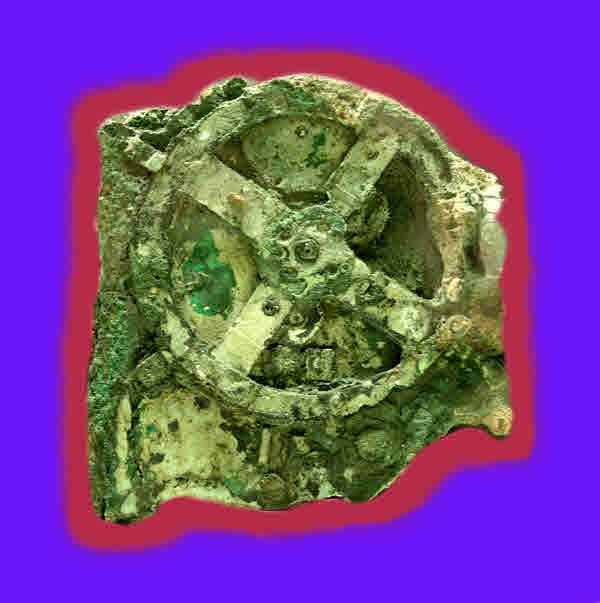
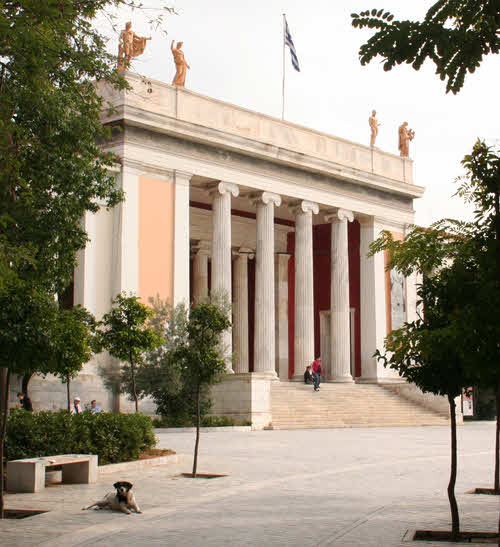
Note the friendly member of the welcoming committee, lower left. All over the city there were large, friendly, apparently feral, dogs. The town council has a sterilization program, so they are all mellow... at least I never met a testy one. And not mangy or flea-ridden that I noticed. I carefully stroked not a few.... of course.... without penalty. No border collies, though. (The sterilization program is organized by the town council, not for the town council...)
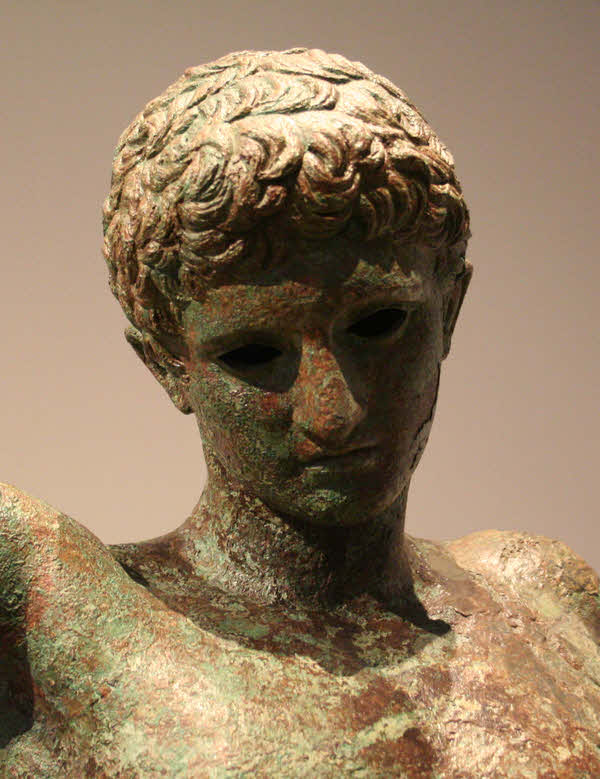
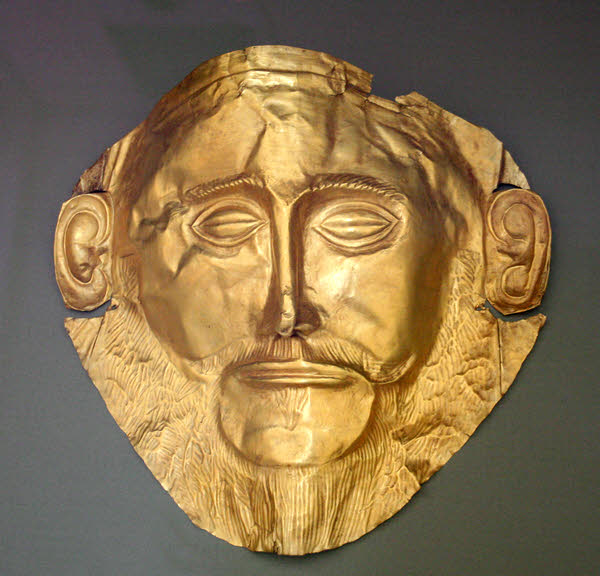
The "Mask of Agamemnon"
Mycenae, 16th C B.C.
Life sized. Very "alive". In a benign way: spooky.

Bronze dagger with gold decoration. 16th century B.C.
From another grave at the Mycenaean site where the Mask of Agamemnon was found.
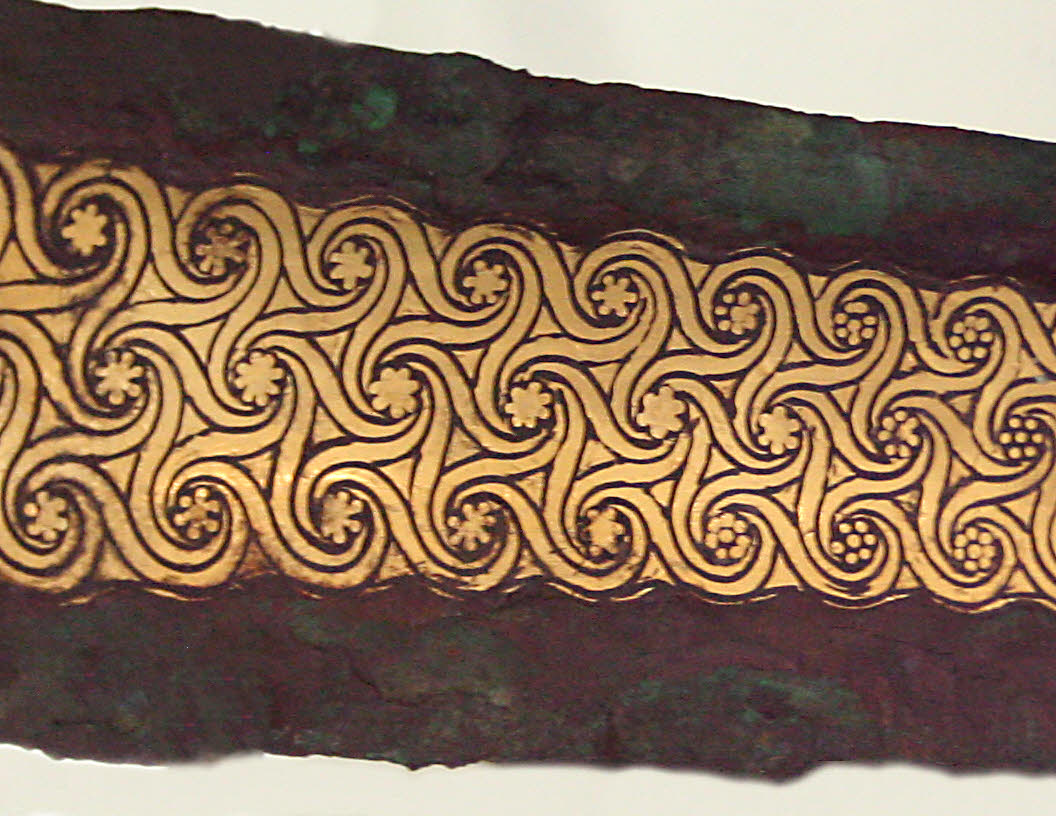
Words fail my hopes of conveying the delicacy of this, and the wonder of its survival for 2,600 years so that we can be entranced by it today. It is not large... perhaps nice inches long. A dagger, or fruit knife, not massive.
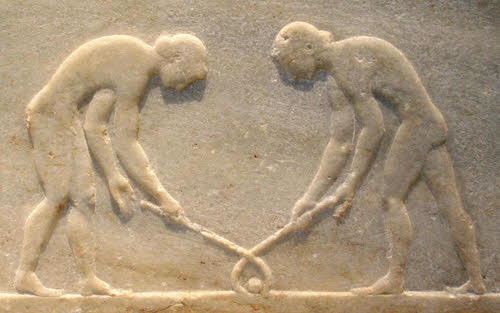
I am frequently intrigued while going around museums and art galleries to learn how long specific things have been with us. This relief from a burial marker clearly shows that hockey is not new.. The marker dates from about 500 B.C. It was found in Athens. I'm glad, given the weather we have in northern climes, that we've made some advances in sports clothing since the early days of hockey.
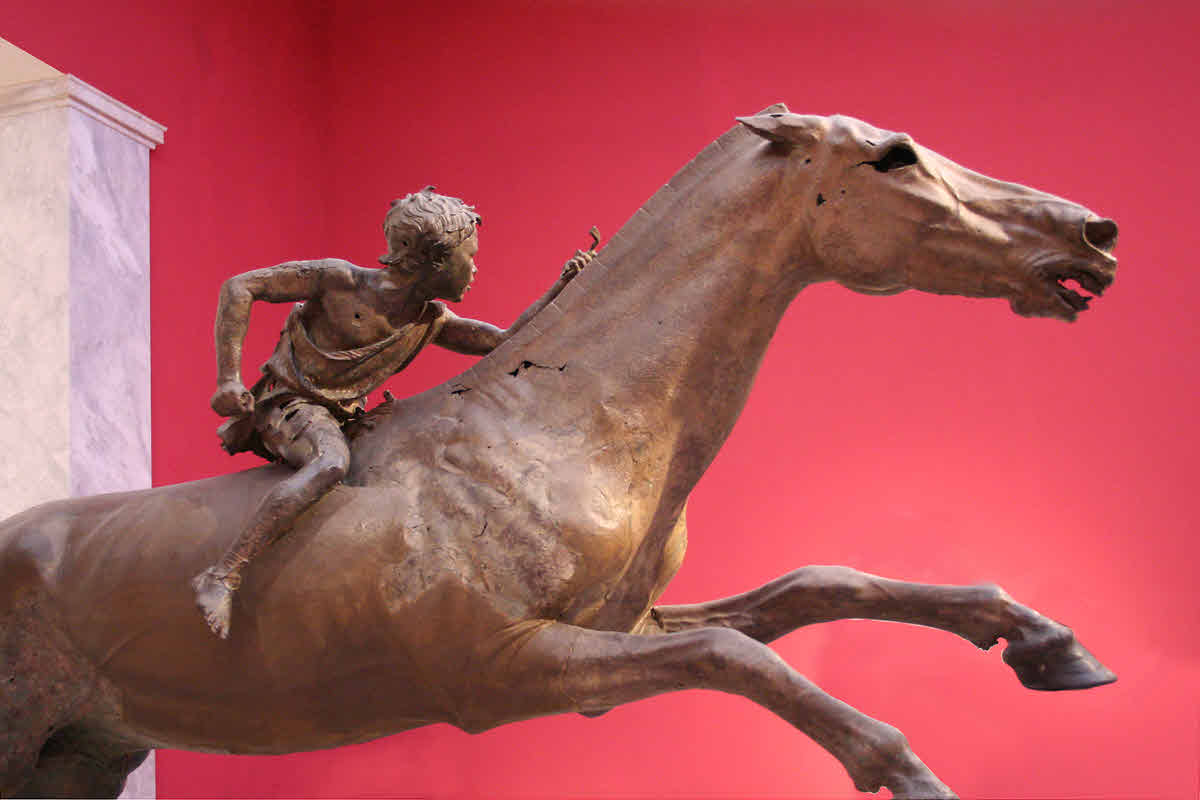
Slightly more than life size. Bronze. Extraordinary.
Notice how beautifully this is displayed and lit by the museum's curators. The same skill and care was frequently in evidence.
For me, the research and study I do before a trip is a significant part of the fun of the trip. And it certainly makes every trip much more enjoyable, once the travel begins. Some of the research is merely practical... "How do I get from the airport to town?". But other research throws up more significant things.
While researching for my Athens visit, I was excited to learn that a particular artifact was in Athens, and on display in the Archaeological Museum. I'd had no idea. No idea it was in Athens; no idea that it was on public display. I'd read about it, been fascinated, but didn't imagine I'd ever see it.
There is some debate about when it was made, by whom, and for what, exactly. It was discovered in 1900, on the sea-bed, part of the cargo in an ancient ship wreck.
Made of bronze, it is a "clock-work" mechanism. After about 2000 years, it is not in pristine condition, but even so, you can see that it is far in advance of anything I ever imagined existing in the classical world.
Do you know what "it" is yet? Maybe you, like me until a few years ago, haven't come across accounts of this intriguing device.
Scroll down, when you are through trying to guess what "it" is.....
v v v v v
v v v v v
v v v v v

It is the Antikythera mechanism. You can read more at Wikipedia.
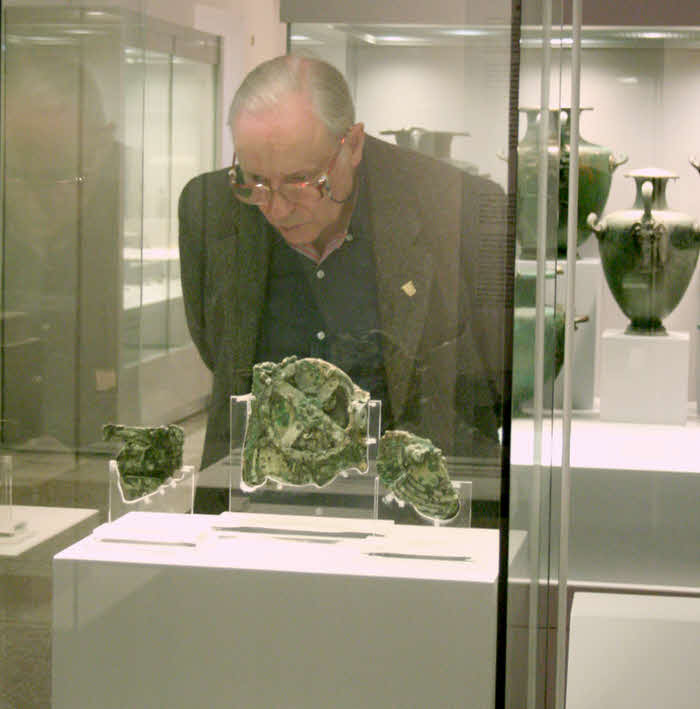
On the left, you see how large it is. Beside the main piece, shown above, are two further surviving fragments in the display case.
While the exact operation and purpose are not known, scholars have theories about the lost parts, inferred from what remains. What remains includes significant passages of "how to use it" text which was inscribed on the outside. It was a calculator for generating certain calendar and astronomical data. Could you, today make a mechanical device to tell you even something as "simple" as the phase of the moon on a night several months from now? The design rather suggests that the creator understood a heliocentric astronomy, by the way. The two photos below of non-corroded brass show you a modern device, created according to conjecture about how the Antikythera mechanism may have worked. Did you know that the devices of such intricate complexity existed so long ago? I certainly didn't before reading about the mechanism, and was excited to see the actual device.
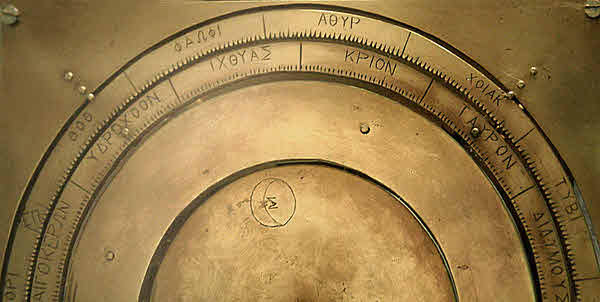
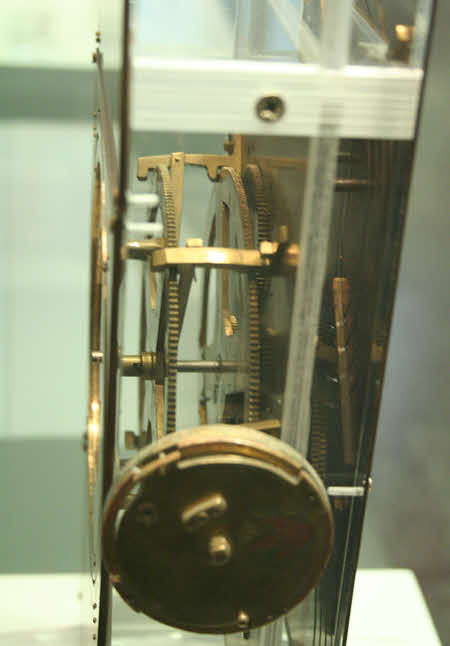
Click here for Athens main page
© TK Boyd 11/09. Click here to contact him.